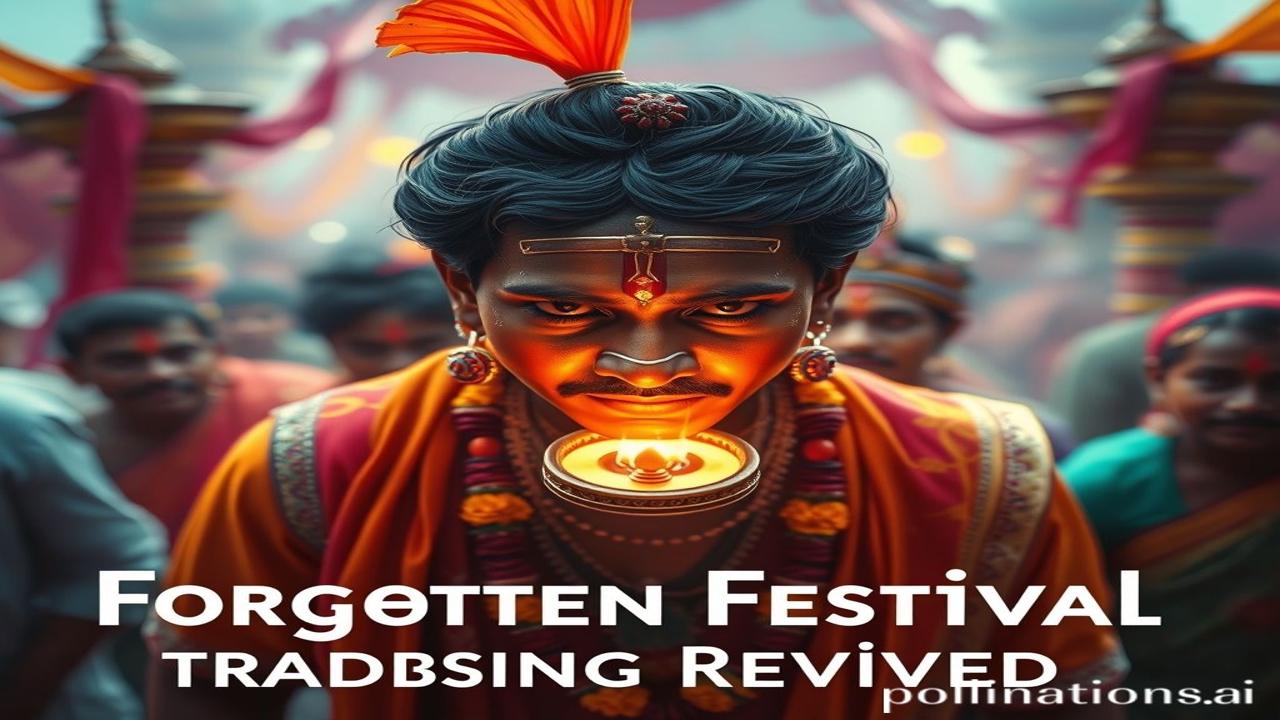Waqt Ki Dhool Mein Khoye Rang: Reviving Forgotten Festival Traditions
Kabhi kabhi lagta hai, jaise hazaaron saal purani koi dhun, dheere dheere, waqt ki dhool mein chhup gayi hai. Ek aisi dhun, jo kabhi Bharat ki galiyon mein goonja karti thi, jo logon ke dilon mein basi thi. Woh dhun hai – un parvaton, un tyoharon ki, jo ab yaadon mein simat gaye hain. Lekin kya yeh sach hai ki woh sab kuch humesha ke liye kho gaya? Nahi! Aisa nahi hai. Aaj hum baat karenge unhi bhule-bisre tyoharon ko punah jeevant karne ki, unme phir se rang bharne ki…
Itihaasic Prismbhumi: Ek Jhanki
Forgotten festival traditions, yaani bhule huye parvaton ki parampara. Ye woh tyohar hain, jo kabhi hamari sanskriti ka ek important hissa the, lekin samay ke saath, woh ya toh kam ho gaye ya phir bilkul gayab ho gaye. Some examples are the ancient celebrations of the harvest season in different regions, the special pujas dedicated to local deities, or the unique rituals performed during weddings or births.
Inki importance hamare itihaas aur culture mein bohot zyaada hai. Ye sirf tyohar nahi the; they were ways of connecting with our ancestors, celebrating nature, and strengthening community bonds. Inko revive karne ka matlab hai apni jaddon se judna, apni dharohar ko pehchanna. Think of the ancient Indus Valley Civilization festivals – while we don’t know the exact details, archaeological evidence suggests elaborate rituals and celebrations. Or the ancient Vedic sacrifices, like the Ashvamedha, which, although controversial today, represented power, prosperity, and community well-being.
Zamini Sach: Log Aur Jeevan
Imagine the life of a farmer in ancient Tamil Nadu, preparing for the Thai Pongal harvest festival. Maali, his wife, would wake up before dawn to decorate the courtyard with intricate kolam patterns. The children, Kannan and Devi, would eagerly await the boiling over of the new rice in the clay pot – a symbol of prosperity and abundance.
“Kannan, jaaldi karo! Suraj nikalne se pehle sab kuch tayyar hona chahiye,” Maali would say, her voice filled with anticipation.
“Amma, kya aaj bhi woh purane wale gaane gaayenge?” Kannan would ask, referring to the folk songs passed down through generations.
“Zaroor! Yeh hamari parampara hai. We must keep it alive!” Maali would reply, smiling.
These forgotten rituals, these songs, these simple joys – they were the very essence of their lives, a reflection of their deep connection to the land and to each other.
Dharohar Aur Pehchan: Aaj Ki Baat
Aaj, we see glimpses of these forgotten traditions in various forms. In many rural areas, people still celebrate local festivals with unique customs that haven’t been documented in mainstream media. The revival of folk art forms, like Madhubani painting or Warli art, also brings back stories and traditions associated with these forgotten festivals.
Reviving these traditions is not just about preserving the past; it’s about enriching our present and future. Yeh Bharatiyata (Indianness) ka ek important aspect hai. By embracing our cultural diversity and remembering our roots, we strengthen our sense of identity and belonging in the modern world.
Mazedaar Tathya Ya Bhram-Bhanjak: Did You Know?
Log samajhte hain ki Holi sirf rango ka tyohar hai, lekin asli sach yeh hai ki Holi ke pehle, bohot se gaon mein, ek ‘Holika Dahan’ hota hai, jisme purani buraiyon aur negative emotions ko jalaya jata hai. This practice is rooted in ancient traditions and symbolizes the triumph of good over evil.
Drishya Aur Bhavnayein: Ek Anubhav
Sochiye, ek purana mandir hai. The air is thick with the scent of incense and marigold flowers. The temple walls feel cool to the touch, worn smooth by centuries of worship. The sounds of chanting priests and ringing bells echo in the sacred space. You can feel the energy, the shakti, of generations of devotees who have come before you.
Antim Vichar Ya Uddharan: A Final Thought
“Utho, yaadon ko punah jeevant karo, kyunki har parampara mein ek kahani hai, aur har kahani mein, hum khud ko paate hain.”
Yeh ek sankalp hai, ek vaada hai – apni dharohar ko sambhal kar rakhne ka, apni pehchaan ko banaaye rakhne ka. So, let’s not just remember the past, but also actively participate in reviving it, so that future generations can also experience the richness and beauty of our forgotten festival traditions.
